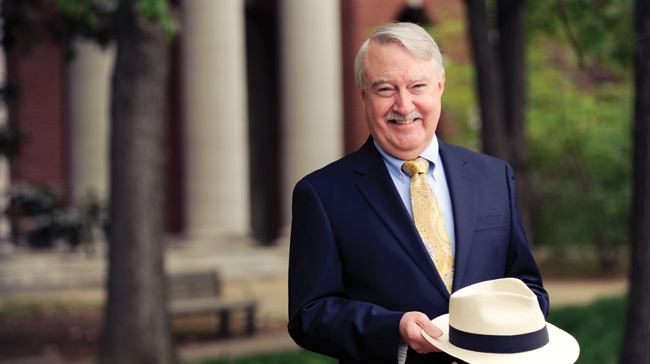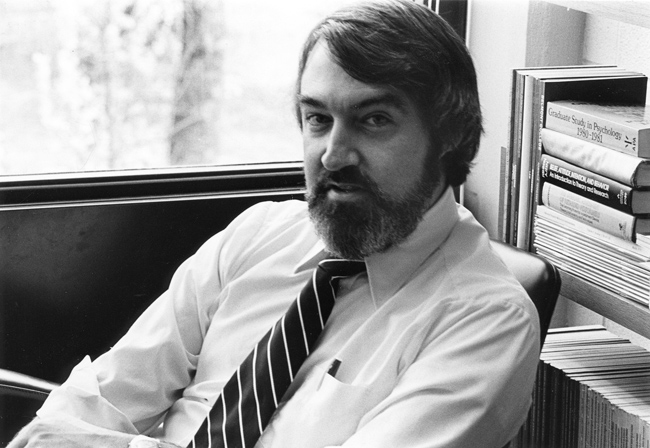
I have been privileged to serve Peabody as associate dean in two decades: in the 1980s and in the first 10 years of the 21st century (actually, since 1998). Two more disparate decades would be difficult to imagine.
My first decade as a Peabody associate dean began in 1980, a few months after the merger with Vanderbilt. The two-thirds of the Peabody faculty who had survived the merger were fearful about the future, and with good reason—enrollments had plummeted, and the college had no robust and sustaining revenue streams. In the first few years after merger, Peabody’s annual deficit was double the subvention of $750,000 that was to be provided in each of our first 10 years as Vanderbilt’s college of education and human development. Elsewhere in the university many predicted that Peabody would be unable to achieve financial viability. The situation was “touch and go”; many at Peabody feared that someone would touch them on the shoulder and tell them to go.
Peabody’s first regular dean, Willis Hawley, took the helm from Acting Dean Hardy Wilcoxon in 1980 and immediately began recruiting new faculty who would increase Peabody’s research capacity and ability to secure external funding. In addition, he worked with Peabody faculty to develop new and innovative academic programs that would absorb excess faculty and attract new students, especially at the undergraduate level. Peabody’s surviving faculty proved to be admirably adaptable and willing to take on new assignments, with many beginning to teach undergraduates for the first time in years. In this first decade a group of faculty led by Professor Robert Innes established a new program, Human Development, that later was renamed Human and Organizational Development (HOD) and was destined to become Vanderbilt’s most popular undergraduate major. The success of HOD was fundamental to Peabody’s eventual financial viability.
Despite their post-merger anxiety, Peabody’s faculty and students were able to laugh at themselves and their situation. For example, the faculty- and student-produced skits of the “Peabody Follies” early in Dean Hawley’s administration included a “program name generator,” operated by associate deans, that parodied our frantic efforts to rebuild enrollments. In addition, Dean Hawley donned tennis shoes and a cardigan sweater in an impersonation of Mr. Rogers singing “You’ll Never Go Down the Drain.” In that uncertain first post-merger decade all of us needed to reassure each other that Peabody’s survival was possible.
In 1990 I left the dean’s office to resume work as a faculty member in the Department of Psychology and Human Development. Dean Hawley, whose administration ended in 1989, initially was replaced by Acting Dean Joseph Cunningham, who was followed by Dean James Pellegrino. By 1998, the end of Dean Pellegrino’s administration, U.S. News & World Report ranked Peabody 10th in the United States among graduate schools of education. During the 1990s Peabody also began completing fiscal years with surpluses, leading one central administration official to comment that Peabody was no longer viewed as a problem. Instead, it had become “part of the solution.”
I returned to the dean’s office in 1998, when Dean Camilla Benbow began her first appointment as Peabody’s leader. While the survival of Peabody no longer was in doubt, the college was experiencing growing pains and organizational challenges that threatened its financial stability and increasing excellence.
For example, the HOD major’s popularity had begun to imperil its continued success. With more than 700 students and its faculty scattered across several departments, the program had become administratively unwieldy. After considerable discussion, the Department of Human and Organizational Development was created to manage most of the HOD major’s core curriculum, two of its tracks, its required internship and three related graduate programs. The major’s policy-related courses and three of its tracks were lodged in the existing Department of Leadership, Policy and Organizations. In addition, department-spanning coordinating committees were created to guarantee program coherence. These changes helped assure the future success of the HOD program.
Early in Dean Benbow’s administration it also became apparent that Peabody needed to restrain expenses—primarily through budgetary adjustments and the achievement of leaner administrative staffing—while diversifying its sources of sustaining revenue. Fifth-year master’s programs were created to make it possible for undergraduates to earn a master’s degree with one additional year of study, master’s programs in additional specialty areas were created, and existing master’s programs were expanded. At the same time, Peabody’s portfolio of externally funded projects was enlarged through continuing recruitment of eminent scholars in all departments. In the same time period, the Kennedy Center was extended from a Peabody-based unit to a transinstitutional research enterprise. And, Peabody’s star continued to rise as promised in our strategic plan.
Dean Benbow arrived as the university was in the midst of strategic academic planning. In 2000, as part of that exercise, the faculty and academic leaders of Peabody College developed a strategic plan that painted a mostly prescient vision of Peabody College in 2010:
… the Peabody College of 2010 will be widely recognized as the place where collaborative, multidisciplinary research involving scholars throughout Vanderbilt University is producing the most exciting discoveries in the areas of how people learn and develop, how teaching at all levels can be made more effective, how education can capitalize to the fullest on emerging technologies, and how social context affects these activities. It also will be recognized as a leader in applying this knowledge to facilitate lifelong learning, optimize human development, prevent or ameliorate developmental disabilities, reform both teacher education and graduate education, and render the institutions of education more effective. As a result of Peabody’s contributions, Vanderbilt University will be well on the way to surpassing such institutions as Harvard and Stanford in being recognized as the university with the very best school of education (and human development) in America.

Substantial investments in Peabody’s strategic plan, continuing success in the recruitment of nationally prominent faculty who garner ever-increasing external funding, and growing numbers of stellar students have propelled Peabody to the level described in our vision of 10 years ago. In the 2010 U.S. News & World Report rankings of graduate schools of education, Peabody was ranked number one for the second year in a row, with Stanford and Harvard tied for number three.
Disparate decades, indeed!
What might the future hold for Peabody? The college’s strong financial position, superb faculty, outstanding students and accomplished alumni portend continued leadership in education and human development. Peabody’s entrepreneurial and adaptive community of scholars will, as in previous years, continue to make important and influential contributions to the knowledge base while pursuing lines of investigation enabled by the emergence of new technical capabilities (e.g., in brain science). At the same time, however, Peabody will maintain the symbiotic linkage of theoretical research and practical application that has distinguished the college for many years. In short, I am confident that the Peabody of the future will remain a source of pride for all of us who have been part of the college.